The Quantum Story: A History in 40 Moments 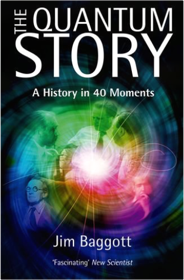 The Quantum Moment: How Planck, Bohr, Einstein, and Heisenberg Taught Us to Love Uncertainty 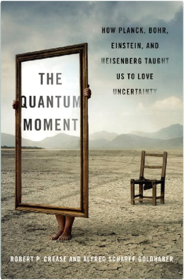 Quantum imagery and language now bombard us like an endless stream of photons. Phrases such as multiverses, quantum leaps, alternate universes, the uncertainty principle, and Schrödinger's cat get reinvented continually in cartoons and movies, coffee mugs and T-shirts, and fiction and philosophy, reinterpreted by each new generation of artists and writers. Is a "quantum leap" big or small? How uncertain is the uncertainty principle? Is this barrage of quantum vocabulary pretentious and wacky, or a fundamental shift in the way we think? All the above, say Robert P. Crease and Alfred Scharff Goldhaber in this pathbreaking book. The authors—one a philosopher, the other a physicist—draw on their training and six years of co-teaching to dramatize the quantum’s rocky path from scientific theory to public understanding. Together, they and their students explored missteps and mistranslations, jokes and gibberish, of public discussion about the quantum. Their book explores the quantum’s manifestations in everything from art and sculpture to the prose of John Updike and David Foster Wallace. The authors reveal the quantum’s implications for knowledge, metaphor, intellectual exchange, and the contemporary world. Understanding and appreciating quantum language and imagery, and recognizing its misuse, is part of what it means to be an educated person today. The result is a celebration of language at the interface of physics and culture, perfect for anyone drawn to the infinite variety of ideas. 61 illustrations, maps The Beginning of Infinity: Explanations That Transform the World 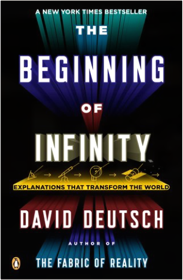 In this groundbreaking book, award-winning physicist David Deutsch argues that explanations have a fundamental place in the universe—and that improving them is the basic regulating principle of all successful human endeavor. Taking us on a journey through every fundamental field of science, as well as the history of civilization, art, moral values, and the theory of political institutions, Deutsch tracks how we form new explanations and drop bad ones, explaining the conditions under which progress—which he argues is potentially boundless—can and cannot happen. Hugely ambitious and highly original, The Beginning of Infinity explores and establishes deep connections between the laws of nature, the human condition, knowledge, and the possibility for progress. The Age of Entanglement: When Quantum Physics Was Reborn  In 1935, in what would become the most cited of all of his papers, Albert Einstein showed that quantum mechanics predicted such a correlation, which he dubbed “spooky action at a distance.” In that same year, Erwin Schrödinger christened this spooky correlation “entanglement.” Yet its existence wasn’t firmly established until 1964, in a groundbreaking paper by the Irish physicist John Bell. What happened during those years and what has happened since to refine the understanding of this phenomenon is the fascinating story told here. We move from a coffee shop in Zurich, where Einstein and Max von Laue discuss the madness of quantum theory, to a bar in Brazil, as David Bohm and Richard Feynman chat over cervejas. We travel to the campuses of American universities—from J. Robert Oppenheimer’s Berkeley to the Princeton of Einstein and Bohm to Bell’s Stanford sabbatical—and we visit centers of European physics: Copenhagen, home to Bohr’s famous institute, and Munich, where Werner Heisenberg and Wolfgang Pauli picnic on cheese and heady discussions of electron orbits. Drawing on the papers, letters, and memoirs of the twentieth century’s greatest physicists, Louisa Gilder both humanizes and dramatizes the story by employing their own words in imagined face-to-face dialogues. Here are Bohr and Einstein clashing, and Heisenberg and Pauli deciding which mysteries to pursue. We see Schrödinger and Louis de Broglie pave the way for Bell, whose work is here given a long-overdue revisiting. And with his characteristic matter-of-fact eloquence, Richard Feynman challenges his contemporaries to make something of this entanglement. The Information: A History, a Theory, a Flood 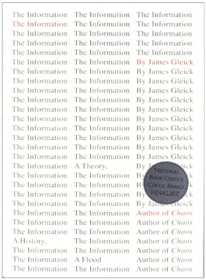 The story of information begins in a time profoundly unlike our own, when every thought and utterance vanishes as soon as it is born. From the invention of scripts and alphabets to the long-misunderstood talking drums of Africa, Gleick tells the story of information technologies that changed the very nature of human consciousness. He provides portraits of the key figures contributing to the inexorable development of our modern understanding of information: Charles Babbage, the idiosyncratic inventor of the first great mechanical computer; Ada Byron, the brilliant and doomed daughter of the poet, who became the first true programmer; pivotal figures like Samuel Morse and Alan Turing; and Claude Shannon, the creator of information theory itself. And then the information age arrives. Citizens of this world become experts willy-nilly: aficionados of bits and bytes. And we sometimes feel we are drowning, swept by a deluge of signs and signals, news and images, blogs and tweets. The Information is the story of how we got here and where we are heading. The Elegant Universe: Superstrings, Hidden Dimensions, and the Quest for the Ultimate Theory 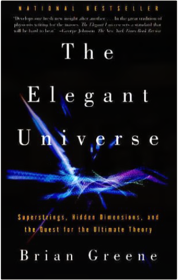 In a rare blend of scientific insight and writing as elegant as the theories it explains, Brian Greene, one of the world's leading string theorists, peels away the layers of mystery surrounding string theory to reveal a universe that consists of 11 dimensions where the fabric of space tears and repairs itself, and all matter-from the smallest quarks to the most gargantuan supernovas-is generated by the vibrations of microscopically tiny loops of energy. Green uses everything from an amusement park ride to ants on a garden hose to illustrate the beautiful yet bizarre realities that modern physics is unveiling. Dazzling in its brilliance, unprecedented in its ability to both illuminate and entertain, The Elegant Universe is a tour de force of science writing-a delightful, lucid voyage through modern physics that brings us closer than ever to understanding how the universe works. The Hidden Reality: Parallel Universes and the Deep Laws of the Cosmos  There was a time when “universe” meant all there is. Everything. Yet, in recent years discoveries in physics and cosmology have led a number of scientists to conclude that our universe may be one among many. With crystal-clear prose and inspired use of analogy, Brian Greene shows how a range of different “multiverse” proposals emerges from theories developed to explain the most refined observations of both subatomic particles and the dark depths of space: a multiverse in which you have an infinite number of doppelgängers, each reading this sentence in a distant universe; a multiverse comprising a vast ocean of bubble universes, of which ours is but one; a multiverse that endlessly cycles through time, or one that might be hovering millimeters away yet remains invisible; another in which every possibility allowed by quantum physics is brought to life. Or, perhaps strangest of all, a multiverse made purely of math. Greene, one of our foremost physicists and science writers, takes us on a captivating exploration of these parallel worlds and reveals how much of reality’s true nature may be deeply hidden within them. And, with his unrivaled ability to make the most challenging of material accessible and entertaining, Greene tackles the core question: How can fundamental science progress if great swaths of reality lie beyond our reach? Sparked by Greene’s trademark wit and precision, The Hidden Reality is at once a far-reaching survey of cutting-edge physics and a remarkable journey to the very edge of reality—a journey grounded firmly in science and limited only by our imagination. The Grand Design  When and how did the universe begin? Why are we here? Why is there something rather than nothing? What is the nature of reality? Why are the laws of nature so finely tuned as to allow for the existence of beings like ourselves? And, finally, is the apparent “grand design” of our universe evidence of a benevolent creator who set things in motion—or does science offer another explanation? The most fundamental questions about the origins of the universe and of life itself, once the province of philosophy, now occupy the territory where scientists, philosophers, and theologians meet—if only to disagree. In their new book, Stephen Hawking and Leonard Mlodinow present the most recent scientific thinking about the mysteries of the universe, in nontechnical language marked by both brilliance and simplicity. In The Grand Design, they explain that according to quantum theory, the cosmos does not have just a single existence or history, but rather that every possible history of the universe exists simultaneously. When applied to the universe as a whole, this idea calls into question the very notion of cause and effect. But the “top-down” approach to cosmology that Hawking and Mlodinow describe would say that the fact that the past takes no definite form means that we create history by observing it, rather than that history creates us. The authors further explain that we ourselves are the product of quantum fluctuations in the very early universe, and show how quantum theory predicts the “multiverse”—the idea that ours is just one of many universes that appeared spontaneously out of nothing, each with different laws of nature. Along the way Hawking and Mlodinow question the conventional concept of reality, posing a “model-dependent” theory of reality as the best we can hope to find. And they conclude with a riveting assessment of M-theory, an explanation of the laws governing us and our universe that is currently the only viable candidate for a complete “theory of everything.” If confirmed, they write, it will be the unified theory that Einstein was looking for, and the ultimate triumph of human reason. A succinct, startling, and lavishly illustrated guide to discoveries that are altering our understanding and threatening some of our most cherished belief systems, The Grand Design is a book that will inform—and provoke—like no other. I Am a Strange Loop 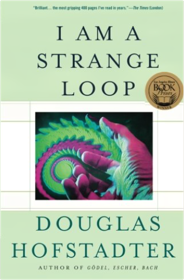 I Am a Strange Loop argues that the key to understanding selves and consciousness is the strange loop”a special kind of abstract feedback loop inhabiting our brains. The most central and complex symbol in your brain is the one called I.” The I” is the nexus in our brain, one of many symbols seeming to have free will and to have gained the paradoxical ability to push particles around, rather than the reverse. How can a mysterious abstraction be realor is our I” merely a convenient fiction? Does an I” exert genuine power over the particles in our brain, or is it helplessly pushed around by the laws of physics? These are the mysteries tackled in I Am a Strange Loop, Douglas Hofstadter’s first book-length journey into philosophy since Gödel, Escher, Bach. Compulsively readable and endlessly thought-provoking, this is a moving and profound inquiry into the nature of mind. Quantum Man: Richard Feynman's Life in Science  Uncertainty: Einstein, Heisenberg, Bohr, and the Struggle for the Soul of Science  —Werner Heisenberg That God would choose to play dice with the world is something I cannot believe. —Albert Einstein Nothing exists until it is measured. —Neils Bohr The remarkable story of a startling scientific idea that ignited a battle among the greatest minds of the twentieth century and profoundly influenced intellectual inquiry in fields ranging from physics to literary criticism, anthropology and journalism In 1927, the young German physicist Werner Heisenberg challenged centuries of scientific understanding when he introduced what came to be known as “the uncertainty principle.” Building on his own radical innovations in quantum theory, Heisenberg proved that in many physical measurements, you can obtain one bit of information only at the price of losing another. Heisenberg’s principle implied that scientific quantities/concepts do not have absolute, independent meaning, but acquire meaning only in terms of the experiments used to measure them. This proposition, undermining the cherished belief that science could reveal the physical world with limitless detail and precision, placed Heisenberg in direct opposition to the revered Albert Einstein. The eminent scientist Niels Bohr, Heisenberg’s mentor and Einstein’s long-time friend, found himself caught between the two. Uncertainty chronicles the birth and evolution of one of the most significant findings in the history of science, and portrays the clash of ideas and personalities it provoked. Einstein was emotionally as well as intellectually determined to prove the uncertainty principle false. Heisenberg represented a new generation of physicists who believed that quantum theory overthrew the old certainties; confident of his reasoning, Heisenberg dismissed Einstein’s objections. Bohr understood that Heisenberg was correct, but he also recognized the vital necessity of gaining Einstein’s support as the world faced the shocking implications of Heisenberg’s principle. The Field: The Quest for the Secret Force of the Universe  God and the Multiverse: Humanity's Expanding View of the Cosmos  How can conceptions of God, traditional or otherwise, be squared with this new worldview? The author shows how long-held beliefs will need to undergo major revision or otherwise face eventual extinction. The Black Hole War: My Battle with Stephen Hawking to Make the World Safe for Quantum Mechanics  A brilliant book about modern physics, quantum mechanics, the fate of stars and the deep mysteries of black holes, Leonard Susskind's account of the Black Hole War is mind-bending and exhilarating reading. Thinking In Numbers: On Life, Love, Meaning, and Math  THINKING IN NUMBERS is the book that Daniel Tammet, mathematical savant and bestselling author, was born to write. In Tammet's world, numbers are beautiful and mathematics illuminates our lives and minds. Using anecdotes, everyday examples, and ruminations on history, literature, and more, Tammet allows us to share his unique insights and delight in the way numbers, fractions, and equations underpin all our lives. Inspired variously by the complexity of snowflakes, Anne Boleyn's eleven fingers, and his many siblings, Tammet explores questions such as why time seems to speed up as we age, whether there is such a thing as an average person, and how we can make sense of those we love. His provocative and inspiring new book will change the way you think about math and fire your imagination to view the world with fresh eyes. Black Holes and Time Warps: Einstein's Outrageous Legacy 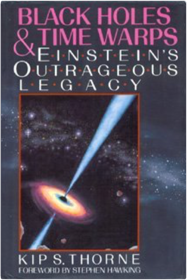 The Source Field Investigations: The Hidden Science and Lost Civilizations Behind the 2012 Prophecies  More than two million people have seen David Wilcock’s incredible tour of the 2012 prophecies in his Internet documentary, The 2012 Enigma., and his appearance on the History Channel show Ancient Aliens has been memorable. Now, he expands his vision with a cutting-edge investigation into alternative sciences with deep insights into what is coming in our immediate future. A stunning synthesis of hidden science and lost prophecies, The Source Field Investigations exposes DNA transformation, wormholes, ancient conspiracies, the Maya calendar, and a new model of galactic energy fields triggering mental, biological, and spiritual evolution. Unlike the apocalyptic viewpoints depicted in big-budget disaster films, Wilcock believes that 2012 will be a watermark for widespread acceptance of a greater realityand here, he lays out the blueprints for such a Golden Age. Dance of the Photons: From Einstein to Quantum Teleportation 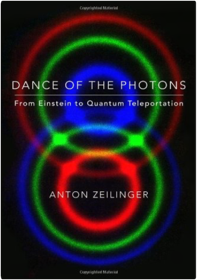 |


Yijing Books and Miscellaneous
Collection Total:
559 Items
559 Items
Last Updated:
Feb 22, 2015
Feb 22, 2015
 Made with Delicious Library
Made with Delicious Library